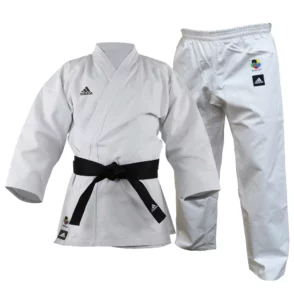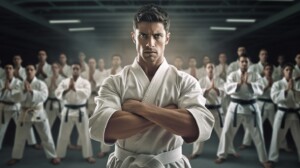Karate is a martial art that has been practiced for centuries. Its origins can be traced back to the Ryukyu Kingdom, which was located on the island of Okinawa in Japan. The people of Okinawa developed their own unique form of martial arts, which they called “te” or “hand.” It was a method of self-defense that was used by the common people who were not allowed to carry weapons.
Over time, “te” evolved into what we now know as karate. It was not until the early 20th century that karate was introduced to mainland Japan. Since then, it has become one of the most popular martial arts in the world. Karate has many different styles and systems, each with its own unique techniques and training methods.
One of the most famous Okinawan karate masters was Gichin Funakoshi. He was instrumental in bringing karate to Japan and was the founder of the Shotokan style of karate. Funakoshi believed that karate was not just a physical activity, but also a way of life. He emphasized the importance of discipline, respect, and humility in his teachings.
Origins of Karate
Karate is a martial art that originated in Okinawa, Japan. However, its roots can be traced back to China and India. The development of karate was influenced by various factors, including cultural exchange, Chinese martial arts, and the Ryukyu Kingdom’s political climate. This section will explore the origins of karate and its development in Okinawa.
Influence from China
Karate’s origins can be traced back to China, where it was influenced by Chinese martial arts such as kung fu. The Ming Dynasty’s collapse in the 17th century led to increased piracy and banditry in the region, prompting the development of self-defense techniques. Chinese martial arts masters traveled to Okinawa to teach their techniques, which were then adapted to suit the local culture. This exchange gave rise to the Okinawan martial arts, which later evolved into karate.
Development in Okinawa
Karate’s development in Okinawa can be traced back to the Ryukyu Kingdom’s political climate. The kingdom was a tributary state of China and had close ties with the mainland. However, the kingdom’s political situation changed in the 19th century when Japan annexed it. The Japanese government banned the use of weapons in Okinawa, leading to the development of empty-hand techniques such as karate.
Karate was further developed in Okinawa’s three major cities: Shuri, Naha, and Tomari. Each city had its own unique style of karate. Shuri-te was the most popular style and was practiced by the nobility. Naha-te was practiced by the middle class, while Tomari-te was practiced by the working class.
In conclusion, karate has its roots in China and India and was influenced by various factors such as cultural exchange, Chinese martial arts, and the Ryukyu Kingdom’s political climate. Its development in Okinawa was shaped by the ban on weapons and the unique styles of the three major cities.
Evolution of Karate
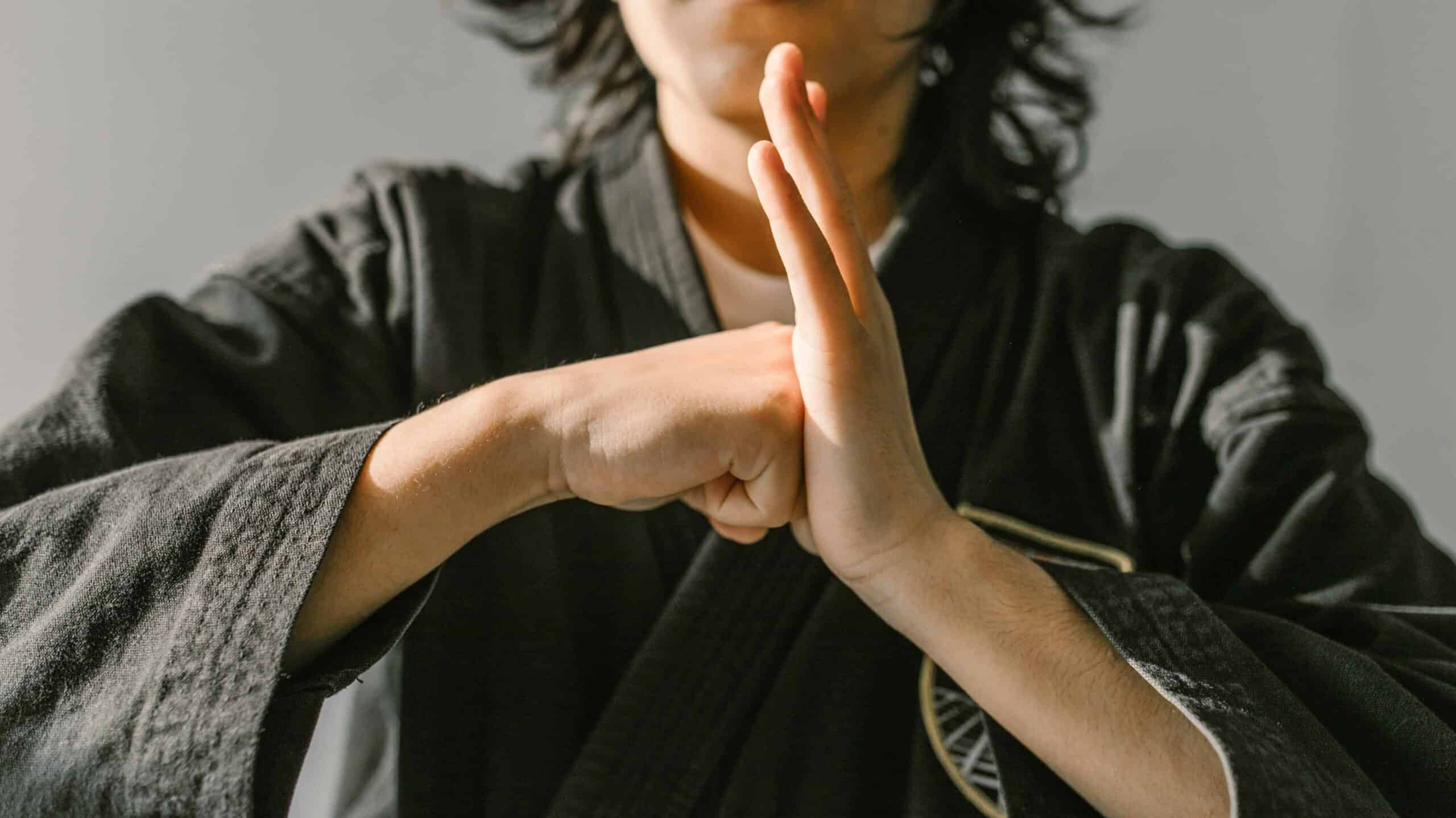
Karate has a rich history that traces back to ancient times. Over the centuries, it has evolved to become a popular martial art that is widely practiced in many countries around the world. In this section, we will explore the evolution of karate and how it has developed over time.
Transition to Japan
Karate was first introduced to Japan in the early 20th century. It was brought over by Okinawan masters who were seeking to spread their art to a wider audience. At the time, karate was known as “kara-te,” which means “Chinese hand.” This name reflected the Chinese influence on the art, as it had been developed in Okinawa through contact with Chinese martial arts.
The transition to Japan was not easy, as karate was not well-known or understood by the Japanese people. However, with the help of dedicated practitioners and teachers, it gradually gained popularity and recognition. In 1924, the first public demonstration of karate was held in Tokyo, which helped to raise awareness of the art and its potential.
Influence of Samurai
One of the key factors in the evolution of karate was the influence of the samurai. The samurai were a class of warriors in feudal Japan who were trained in various martial arts. They had a strong influence on Japanese culture and were highly respected for their skills and discipline.
Karate was seen as a way to continue the samurai tradition in Japan, as it emphasized discipline, respect, and self-control. Many samurai practitioners took up karate and helped to shape its development. They brought their own techniques and philosophies to the art, which helped to make it more well-rounded and effective.
Adoption in Mainland Japan
Karate continued to grow in popularity in Japan throughout the 20th century. In 1933, the Japanese Martial Arts Committee was formed to oversee the development and promotion of martial arts in Japan. Karate was one of the arts that was recognized by the committee, which helped to give it more legitimacy and support.
In the years that followed, karate was adopted by many different groups and organizations in mainland Japan. It was taught in schools, universities, and community centers, which helped to make it more accessible to the general public. Today, karate is one of the most popular martial arts in Japan, and it continues to evolve and develop as new practitioners and teachers bring their own ideas and techniques to the art.
Styles and Techniques
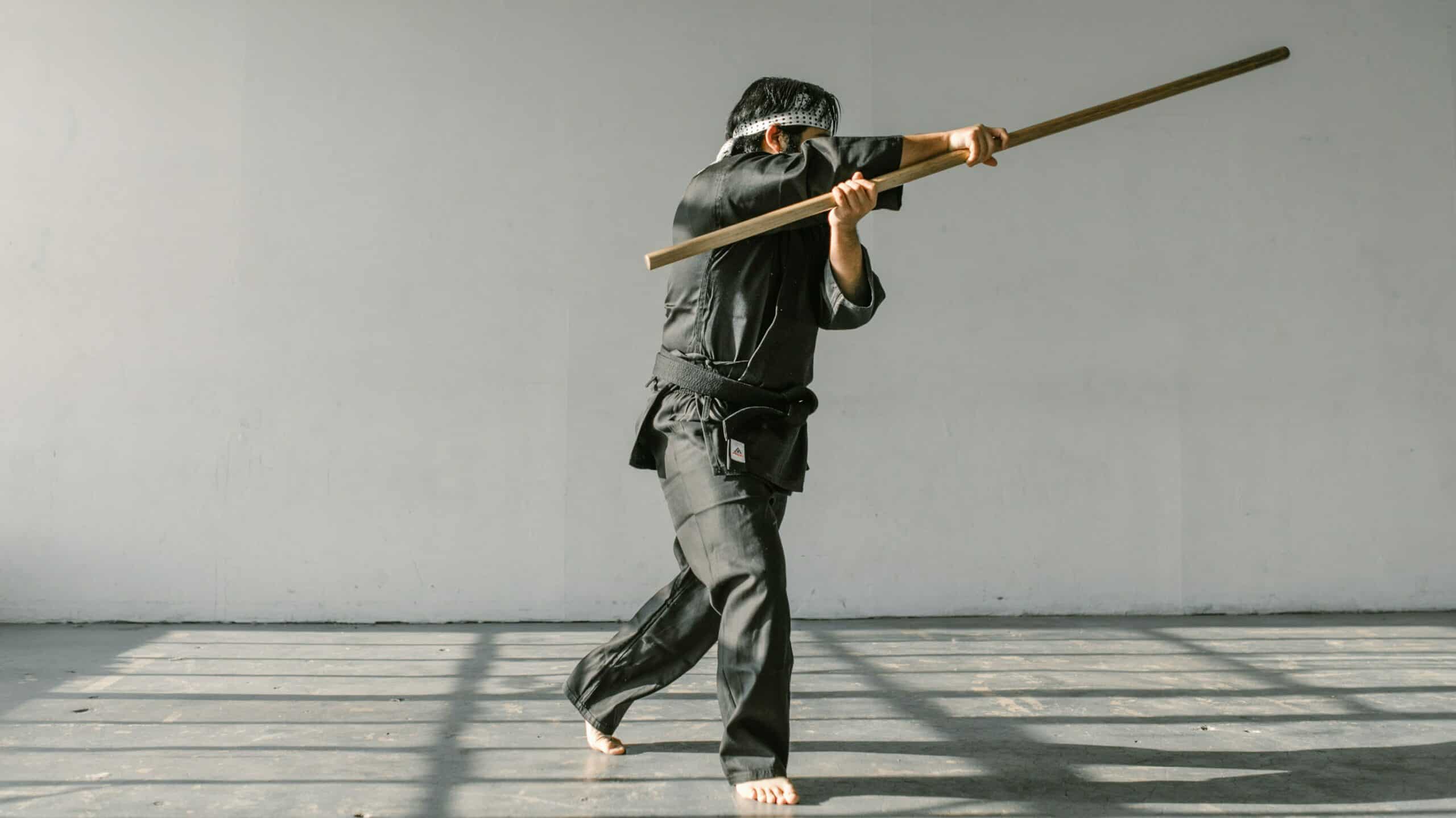
Karate has a variety of styles and techniques that have evolved over time. Each style has its unique characteristics, movements, and philosophies. In this section, we will discuss some of the most common styles and techniques used in karate.
Kata and Kumite
Kata and Kumite are two essential components of karate. Kata is a prearranged sequence of movements that simulate a fight against multiple imaginary opponents. It is a fundamental training method that helps karate practitioners develop their techniques, balance, and coordination. Kumite, on the other hand, is sparring or fighting against a real opponent. It is a crucial aspect of karate that helps practitioners develop their timing, distance, and strategy.
Weapon Techniques
Karate originally did not include the use of weapons. However, some styles have incorporated weapon techniques into their training. The most common weapons used in karate are the bo staff, sai, tonfa, and nunchaku. Weapon techniques require a lot of practice, skill, and control.
Hand and Foot Techniques
Karate is famous for its powerful hand and foot techniques. Hand techniques include punches, strikes, and blocks, while foot techniques include kicks and sweeps. Karate practitioners use their entire body to generate power and speed in their techniques. Some styles focus more on hand techniques, while others emphasize foot techniques.
Katas
Katas are prearranged sequences of movements that simulate a fight against multiple imaginary opponents. Each style has its unique katas, and they are an essential part of karate training. Practitioners must learn the correct movements, timing, and breathing for each kata. Katas help develop muscle memory, balance, and coordination.
Naha-te and Shuri-te
Naha-te and Shuri-te are two of the most influential styles of karate. Naha-te focuses more on close-range combat and grappling techniques, while Shuri-te emphasizes long-range strikes and kicks. Both styles have their unique katas, movements, and philosophies.
Karate Kumite
Karate Kumite is a type of sparring or fighting against a real opponent. It is a crucial aspect of karate training and helps practitioners develop their timing, distance, and strategy. Karate Kumite is divided into two categories: Shiai Kumite, which is competitive sparring, and Gohon Kumite, which is a set of prearranged sparring techniques.
In conclusion, karate has a rich history of styles and techniques that have evolved over time. Each style has its unique characteristics, movements, and philosophies. Practitioners must learn the correct techniques, timing, and breathing for each style to become proficient in karate.
Karate and Philosophy
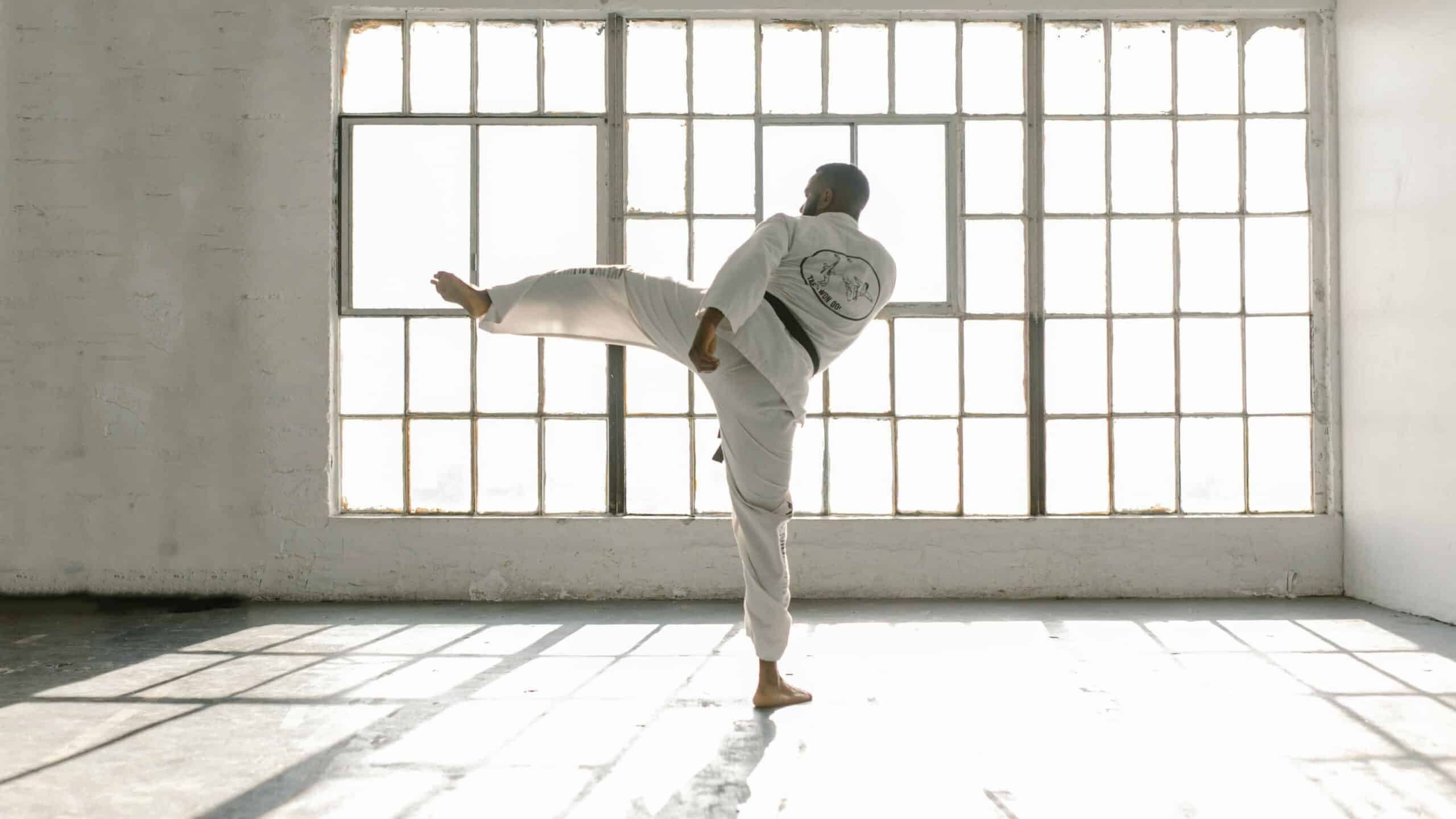
Karate is not just a physical activity, but it is also a way of life that involves mental and spiritual development. The philosophy of karate is deeply rooted in the Japanese concept of Budo, which is the martial way of life. The philosophy of karate is based on the principles of discipline, respect, humility, and self-control. In this section, we will explore the influence of Budo on the philosophy of karate and the role of character in karate.
The Influence of Budo
Budo is a Japanese term that refers to the martial arts way of life. It is a philosophy that emphasizes the development of the mind, body, and spirit. The principles of Budo are based on the teachings of Zen Buddhism, which emphasizes the importance of self-discipline, self-control, and self-awareness. The philosophy of Budo is reflected in the practice of karate, which emphasizes the importance of discipline, respect, and humility.
The practice of karate involves a strict training regimen that requires discipline and self-control. The goal of karate is not to defeat an opponent but to develop the self. The practice of karate helps individuals to develop mental and physical discipline, which can be applied to all aspects of life. The philosophy of Budo emphasizes the importance of self-awareness and self-improvement.
The Role of Character
The philosophy of karate places a great emphasis on the development of character. The practice of karate helps individuals to develop qualities such as discipline, respect, humility, and self-control. The development of character is an essential aspect of the practice of karate, as it helps individuals to become better people.
The role of character in karate is reflected in the practice of kata, which is a series of prearranged movements that simulate a fight against imaginary opponents. The practice of kata helps individuals to develop mental and physical discipline, as well as self-control and self-awareness. The practice of kata helps individuals to develop the qualities of discipline, respect, and humility.
In conclusion, the philosophy of karate is deeply rooted in the Japanese concept of Budo, which emphasizes the development of the mind, body, and spirit. The practice of karate helps individuals to develop mental and physical discipline, as well as self-control and self-awareness. The philosophy of karate places a great emphasis on the development of character, which is essential for individuals to become better people.
Karate as a Sport
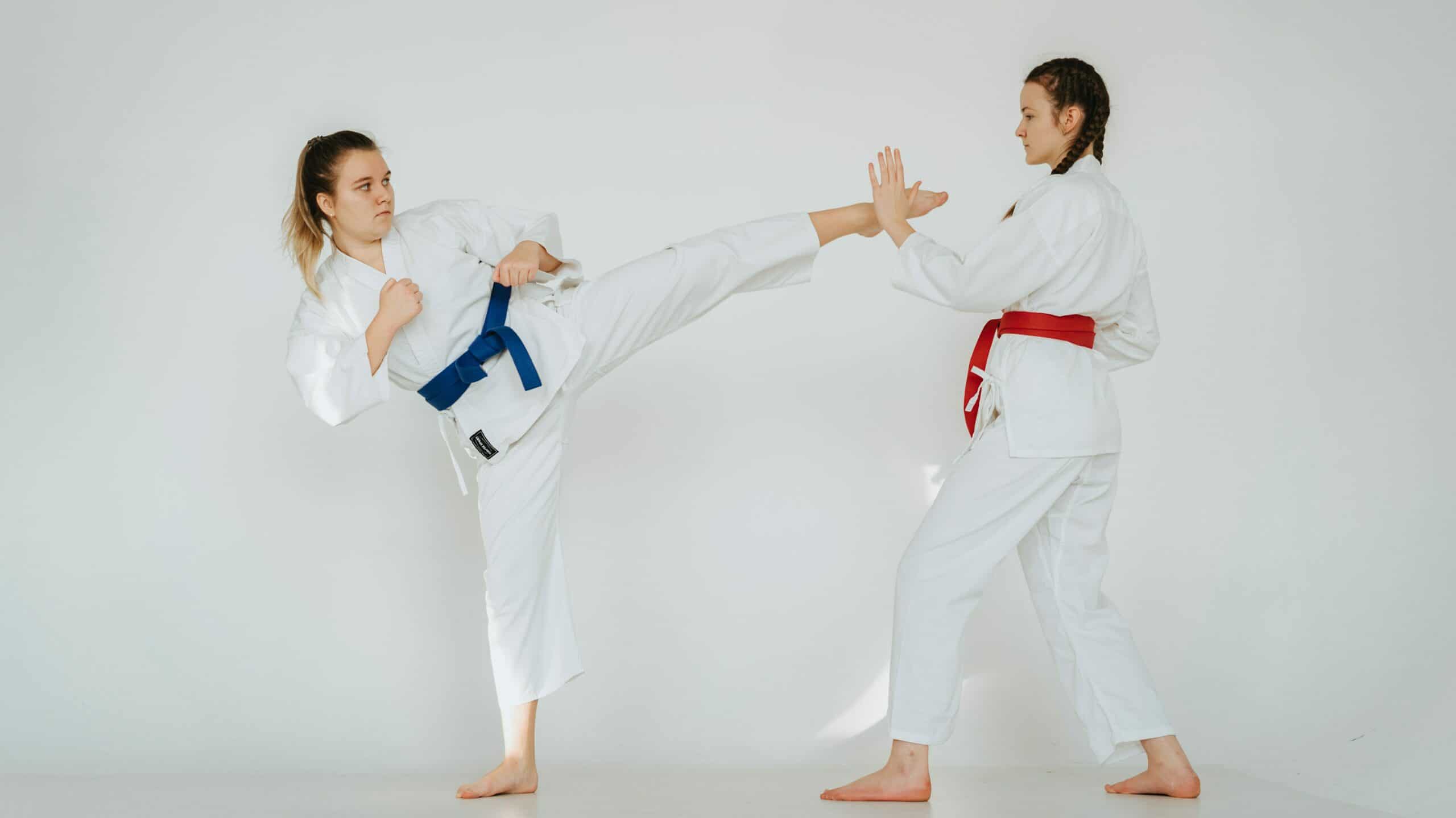
Karate is not only a martial art but also a sport that has gained worldwide recognition. The sport has evolved over time, and today, it is a popular competitive activity with a structured set of rules and regulations.
Karate in the Olympics
Karate became an Olympic sport in 2016, and it was included in the Tokyo Olympics held in 2021. The International Olympic Committee (IOC) recognized Karate as an Olympic sport in 1999, and it took more than two decades for the sport to make its Olympic debut.
Karate in the Olympics consists of two disciplines: Kumite and Kata. Kumite is a sparring discipline that involves two athletes competing against each other, while Kata is a demonstration of techniques performed solo. The World Karate Federation (WKF) is the governing body responsible for organizing Karate events in the Olympics.
Sport Karate Tournaments
Sport Karate tournaments are organized at various levels, from local to international. These tournaments provide an opportunity for athletes to showcase their skills and compete against others. The rules and regulations of these tournaments vary depending on the level of competition.
The World Karate Federation (WKF) is the governing body responsible for organizing international Karate tournaments. The WKF organizes the Karate World Championships, which is held every two years. The tournament attracts athletes from all over the world and is considered the most prestigious Karate tournament globally.
In addition to the Karate World Championships, the WKF also organizes the Karate 1 Premier League. The Karate 1 Premier League is a series of international Karate tournaments held in different countries. The tournament attracts top athletes from around the world and provides an opportunity for them to earn ranking points.
In conclusion, Karate as a sport has come a long way since its inception. Today, it is a recognized Olympic sport and is played at various levels, from local to international. The sport has a structured set of rules and regulations, and athletes compete against each other to showcase their skills.
Prominent Figures in Karate History
Gichin Funakoshi and Shotokan
Gichin Funakoshi is widely regarded as the father of modern karate. He was born in Okinawa in 1868 and began studying karate under the tutelage of two of the most famous masters of the time, Yasutsune Itosu and Sokon Matsumura. Funakoshi was instrumental in the development and spread of karate throughout Japan, and his teachings formed the basis of Shotokan karate, one of the most popular styles of karate in the world today.
Funakoshi’s approach to karate emphasized the importance of character development and personal growth, as well as physical training. He believed that the ultimate goal of karate was not to defeat others, but to improve oneself. Funakoshi’s philosophy and techniques continue to influence karate practitioners around the world.
Kenwa Mabuni and Goju-Ryu
Kenwa Mabuni was born in Okinawa in 1889 and began studying karate at a young age. He was particularly interested in the traditional Okinawan style of Naha-te, which emphasized close-range combat and circular movements. Mabuni went on to develop his own style of karate, which he called Goju-Ryu, or “hard-soft style.”
Goju-Ryu is characterized by a combination of hard, linear movements and soft, circular movements. It emphasizes the use of breathing and relaxation techniques to maximize power and efficiency. Mabuni’s contributions to the development of karate were significant, and Goju-Ryu remains one of the most respected and widely practiced styles of karate today.
Chojun Miyagi and Goju-Ryu
Chojun Miyagi was born in Okinawa in 1888 and began studying karate under the guidance of Kanryo Higaonna, one of the most famous masters of the time. Miyagi went on to develop his own style of karate, which he called Goju-Ryu, based on the principles of Naha-te and Chinese martial arts.
Miyagi’s approach to karate emphasized the importance of balance and harmony, both in physical movements and in personal relationships. He believed that karate was not just a means of self-defense, but a path to self-improvement and spiritual growth. Miyagi’s contributions to the development of karate were significant, and his legacy continues to influence karate practitioners around the world.
Overall, these three figures played a crucial role in the development and spread of karate, each contributing their own unique philosophy and techniques. Their influence can be seen in the many different styles of karate that exist today, from full-contact karate to Kyokushin and beyond. Karate has a rich and complex history, with roots that can be traced back to the teachings of Bodhidharma and the Shaolin Temple in China. Today, karateka around the world continue to study and practice this ancient martial art, striving to embody the principles of discipline, respect, and self-improvement that lie at its core.
Karate in Modern Times

Karate has come a long way since its inception in Okinawa, Japan. Today, it is a popular martial art practiced around the world, with millions of practitioners of all ages and skill levels. In modern times, karate has evolved to incorporate technology, literature, and media, making it more accessible and appealing to a wider audience.
Karate and Technology
Technology has played a significant role in the modernization of karate. With the advent of video technology, karate practitioners can now record their training sessions and analyze their techniques to improve their skills. Karate training apps and online tutorials have also become popular, allowing practitioners to learn and practice karate at their own pace and convenience.
Karate equipment has also evolved with technology. Modern-day karate uniforms are made of lightweight, breathable fabrics that allow for ease of movement. Protective gear, such as helmets and gloves, have also been developed to reduce the risk of injury during sparring and competition.
Karate in Literature and Media
Karate has also made its way into literature and media, with numerous books, movies, and TV shows featuring the martial art. Many of these works have helped to popularize karate, making it more accessible and appealing to a wider audience.
One of the most famous works of karate literature is “The Karate-Do: My Way of Life” by Gichin Funakoshi, the founder of Shotokan karate. The book provides insights into the philosophy and practice of karate and has become a must-read for serious karate practitioners.
In media, the “Karate Kid” movie franchise has become an iconic representation of karate in popular culture. The movies follow the journey of a young boy who learns karate from his mentor, Mr. Miyagi, and competes in tournaments. The franchise has inspired many to take up karate and has helped to popularize the martial art around the world.
Karate has also been featured in many video games, such as “Tekken” and “Street Fighter.” These games have helped to introduce karate to a younger audience and have contributed to its popularity among the gaming community.
In conclusion, karate has evolved with the times, incorporating technology, literature, and media to become more accessible and appealing to a wider audience. With its rich history and philosophy, karate continues to inspire and attract people of all ages and backgrounds.
Frequently Asked Questions
What is the origin country of karate?
Karate originated in Okinawa, Japan, in the 17th century. It was developed by the indigenous people who were forbidden to carry weapons by the ruling Japanese samurai. The Okinawans developed a system of unarmed fighting techniques that later became known as karate.
What is Shotokan karate?
Shotokan karate is a style of karate developed by Gichin Funakoshi in the early 20th century. Funakoshi is considered the father of modern karate and was instrumental in bringing karate to the Japanese mainland. Shotokan karate is characterized by its emphasis on strong, linear movements and powerful strikes.
What is the origin of karate and kung fu?
Karate and kung fu are both martial arts that originated in Asia. Karate originated in Okinawa, Japan, while kung fu originated in China. While there are some similarities between the two, such as the emphasis on striking and kicking techniques, they are distinct martial arts with their own unique histories and techniques.
What are the rules of karate?
Karate has a set of rules that govern competition, known as the “karateka.” The rules vary depending on the organization but typically involve scoring points by striking or kicking your opponent. Points are awarded based on the effectiveness of the technique and the number of strikes or kicks landed.
What are the differences between karate and kung fu?
Karate and kung fu are both martial arts, but they have distinct differences. Karate emphasizes strong, linear movements and powerful strikes, while kung fu places more emphasis on fluid, circular movements, and acrobatic techniques. Additionally, karate is typically more focused on self-defense, while kung fu places more emphasis on spiritual and philosophical aspects.
What are three historical facts about karate?
- Karate was originally developed as a form of self-defense by the indigenous people of Okinawa, Japan.
- Karate was brought to the Japanese mainland by Gichin Funakoshi in the early 20th century and later spread to the rest of the world.
- Karate has been an Olympic sport since 2020, when it was included in the Summer Olympics held in Tokyo, Japan.


